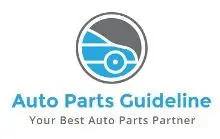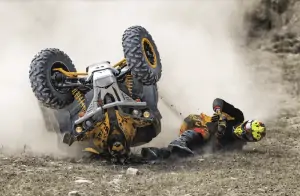Before you proceed with any kind of winching operation, you need to make sure that your winch cable is spooled or attached tightly around the winch drum.
Because if it isn’t the case, then the cable may snap back all of a sudden and injure somebody nearby. And this is obviously not what you would like to experience!
You never know when the cable rope wears out after continuous usage and you may require a replacement. In that case, knowing how to attach cable to winch drum is a must to make your winch work again.
In this article, we will be discussing step by step process of attaching a cable to its winch drum. Stay tuned!
What Are The Signs That Indicate You Need A New Cable?
Before we get into the discussion of attaching a cable, it’s important to understand exactly when you need it to be done and the signs behind it. You need to attach a new cable when you see:
- Excessive fraying or distortion of the wire
- Change in appearance and color on the wire surface due to rusting
- Rust and cracks on drum shafts and grooves
- Deformation on lift hooks, etc.
- Split wrapping on the drum shaft, caused by overloading which keeps happening after replacement of wire rope
- Corrosion of drum bearings
- Wire slipping on the drum shaft due to a reduction in the outer diameter of wire rope.
- Drum winding failure
- Failure of winch brake operation, etc.
- Inability to move the winch handles with all your strength
- Inability to properly attach a cable to the winch drum
- Knocking sound heard during operation
- Wire parting or wire rope breakage
Attaching Cable To Its Winch Drum
There are several ways to attach a winch cable to its drum, but here we will be showing you one of the easiest methods to do it just by yourself without facing much hassle.
The following steps, when followed carefully, should result in an attachment that can withstand all types of pulling forces without coming loose:
Step 1: Decide If You Need A New Rope
If you’re using an old rope, it may have deteriorated over time due to age and general wear-and-tear.
Moreover, the old wire might stretch more than the newer wire would underload. If you have a new rope, you can skip stepping 2.
Step 2: Determine The Length Of Cable Needed
The amount of power your winch has will determine the size of the cable needed. For instance, a 6-ton winch should use at least 1/2″ diameter wire rope that’s 75 feet long or less.
Step 3: Cut The Right Length Of Cable
If you’re using a wire rope, cut it to 75 ft. The easiest way to cut wire rope is to cut it with a large bolt cutter.
On the other hand, if you’re using a new wire, it may be necessary to remove the protective coating from the ends of the wire first.
Step 4: Attach One End Of The Cable To A Clevis Pin
The easiest way to attach a clevis pin, which is a metal L-shaped fitting with a shackle pin, is by attaching it with a winch hook.
There are three sides to the hook. The top has a fork-shaped edge, which is what you will use to attach the clevis pin for tightening.
Step 5: Feed The Cable Through A Fairlead
A fairlead is a metal block that has an opening shaped like a ‘V’ facing upwards.
If you’re using wire rope instead of new wire, be sure to coat the ends of the wire with grease before feeding it into the fairlead. This prevents the wire from being damaged when it’s pulled back into the winch drum.
Step 6: Thread The Cable Through Inside Of Winch Drum
Match up the grooves in the drum to the width of the cable you’re using, then feed it into one groove at a time until all grooves are filled. The torque should be tight, so the drum doesn’t slip while winching or while it’s parked.
Step 7: Attach Clevis Pin To Other Ends Of The Cable
With your locking pliers, attach a clevis pin to the other end of the cable. Trim excess wire as needed before using locking pliers.
Step 8: Attach A Hook Or Pulley
Attach it so your load will have enough room to move without rubbing against anything within the drum. You can also attach a chain to the winch hook or pulley and then to the load.
Step 9: Check The Attachment
Test out your work by pulling the winch up and down with some weight attached. After every pull, inspection is necessary to ensure that everything has stayed in place.
If anything looks broken or damaged, fix it before the next use.
What Should You Be Careful Of?
A few things that you should be wary of while attaching a cable to a winch drum are:
The Right Size Wire For The Job
If you have too light of a wire, not enough power will be transferred from the windlass to the drum. A wire that’s too heavy will overload your equipment and could cause damage & injury.
Wire Rope With Worn-Out Swages Or Thimbles
If this happens, don’t try to straighten them out because they might break completely in half. Replace old parts before using new wire on a winch hook or pulley.
Cable End Hooks That Aren’t Properly Attached
Missing hooks can cause loads to slip off the hook, which can cause damage to the hook, wire rope, and load. It could also happen that the hook falls off, which could cause injury if it falls on someone.
Improper Shackle Attaching Areas
A metal protrusion should be created at the end of the rope where it comes out of a piece of equipment so that there isn’t any fraying. If this metal protrusion is missing you’re taking a chance that your line will fray prematurely.
How To Choose A Suitable Wire Rope For The Winch?
Here are some tips to choose the right kind of wire rope for your winch. Have a look:
- Choose a wire rope that is suitable for your winch depending on its size and working load. For example, a wire rope suitable for a winch with a nominal rated load of 3 tons should be able to carry a load of at least 2.2 tons.
- Use a wire rope that satisfies both your winch and your use. For example, if you use the wire rope which has been used three times in mining work, it should be judged whether or not this wire is suitable for other work such as marine use.
- Confirm the production standard of wire ropes (wire specification, wire grade, type of protective cover, etc.). Uses should be approved by the relevant standards.
- Check if there are any signs of damage or cracks on the wire rope. If there are broken wires in the outer layer of the protective cover due to impact load during transportation and storage, it should be judged whether or not this wire is suitable for use.
- Check if there are any sharp wires in the wire rope, which might injure workmen or machines during installation and use.
- Confirm that you can attach a hook or bracket to each end of the wire rope. It should be confirmed that you will be able to feed the wire around drums, reels, and other objects to ensure that it will be able to withstand the load (tensile force) when in use.
Precautions To Follow
Don’t forget to follow these precautions for a safe cable attaching job.
- Attach a cable to the drum before carrying out any work. If a cable is attached while working, it may break and cause injuries or damage.
- Wear gloves and safety goggles when attaching a cable to the winch drum. There is a danger of getting injured if your hands touch the spinning drum or wire rope.
- When working with a wire rope, never stretch it beyond its limit and do not allow twists in the wire strand. Otherwise, it may break and cause injuries or damage.
- Use an appropriate stool when you attach a cable with the winch. Potential risks are there if you drop the stool and fall against the drum or wire rope.
- When attaching a cable to the winch, check that the power supply is not in operation and that switches are in off positions. Engage locks before working with a machine in order to prevent them from operating during work.
Conclusion
Attaching a cable to its winch drum is not rocket science only a few people are capable of doing it!
The whole procedure is simple and technically easy if you know how to attach cable to winch drum the right way. Just make sure you follow the precautions carefully and carry out the attaching job at a slow and steady pace.
We hope this article helped you learn this important maintenance part of your winch. Have a good day!




![Read more about the article Worm Gear Winch Explained [How Does It Work]](https://autopartsguideline.com/wp-content/uploads/2022/03/what-is-a-worm-gear-winch-300x214.webp)